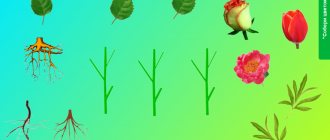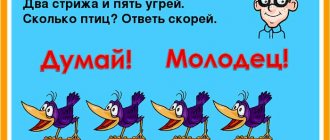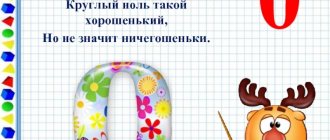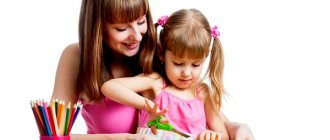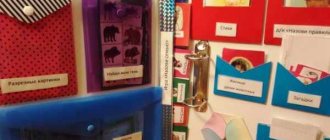LiveInternetLiveInternet
Quote from Tatyana57
Read in full In your quotation book or community!
SPEECH DEVELOPMENT. LEXICAL TOPICS “WINTER” AND “WINTER FUN”.
CHILDREN SHOULD KNOW THE NOUNS: winter, cold, wind, snow, snowflake, snowball, snowfall, snowman, ice, floe, icicle, blizzard, blizzard, drifting snow, cold, pattern, crust, frost, snowdrift, thaw, hoarfrost, cereals, flakes , drops, sleds, skis, skates, skating rink, ski track, snow woman, fur coat, sheepskin coat, down jacket, felt boots, mittens, mittens, hat, December, January, February. ADJECTIVES: cold, frosty, snowy, shiny, crunchy, crumbly, sticky, wet, white, clean, fluffy, windy, sunny, patterned, crackling, strong, transparent, icy, icy, light, wintery, sparkling, hard. VERBS: came, goes, falls, spins, freezes, covers, falls asleep, sweeps, freezes, howls, makes noise, drips, shines, draws, flies, melts, falls out, curls, freezes. CHILDREN SHOULD BE ABLE TO SELECT SIGNS:. Snow - white, fluffy, light, sparkling, cold... Winter - cold, harsh, frosty, windy... Frost..., ice..., blizzard..., snowflake... KNOW THE WINTER MONTHS: December, January, February. December after November and before January. January - ... February - ... FINISH SENTENCES: In winter, people wear ... (hats, fur coats ...). Winter brings...(snowfalls, frosts...). The water froze on...(rivers, lakes...). I like to ride in winter...(sleighing, skiing...). SELECT NOUNS: Snowy - lump, town, whirlwind... Snowy - woman, mountain, veil... Frosty..., frosty..., frosty..., icy... . CALL IT AFTERLY: Winter - winter, frost - frost, snow - snow, ice - ice, snowdrift - snowdrift, blizzard - blizzard... COMPLETE STORIES ACCORDING TO PLAN: How did you notice the onset of winter? Name its first signs in nature. Winter months. Habits of animals and birds. Winter fun and entertainment. "WINTER FUN". CHILDREN SHOULD KNOW THE NOUNS: winter, snow, snowflake, snowball, Snow Maiden, Santa Claus, snowman, snow woman, ice, skating rink, skates, sled, skis, slide, fun, Christmas tree, holidays, garland, tinsel, balls, star, confetti , gifts, holiday, joy, fun, games, carnival, round dance, masks, calendar, firecrackers, cones, snowdrift, snowball, hockey, stick, puck, competition. ADJECTIVES: cold, frosty, joyful, snowy, shiny, colorful, cheerful, crackling, festive, New Year's, patterned, crispy, fluffy, icy, sad, silvery, motley. VERBS: walks, steps, spins, draws on the windows, covers, dances, has fun, rejoices, lights up, flares up, throws, throws, descends, creaks, runs, overtakes, falls, shakes off, freezes, sticks, stings, pricks. TOGETHER WITH THE CHILD. SELECT A SIGN FOR THE OBJECT: Christmas tree (what?)…… Holiday (what?)….. Christmas tree decorations (what?)….. WHO NEEDS WHAT: Hockey player – stick, puck, skates, skating rink, goal… Skier –… Figure skater – ... Hill - ... Snowman - ...
WE IMPROVE THE ABILITY TO RELL. HEALTHY WALK. “There is a lot of snow in the city park in winter. Snow lies on the ground, on benches, on tree branches. The guys went to the park. They built a snow fort there and started playing snowballs. One snowball fell into the feeder. The boys noticed that it was empty. They took the seeds out of their pockets and poured them into the feeder. And from another tree two squirrels were looking at the guys. The boys prepared nuts for them. It turned out to be a fun and useful walk.” * ANSWER THE QUESTIONS: — Where is the snow? -Where did the guys go? -What did they build? — How did the guys start playing? -Where did the snowball fall? -What did the boys notice? —What did you feed the birds? — What did the boys prepare for the squirrels? — What kind of walk did the guys have? WARM FEEDER. "It was winter. Vanya was coming from kindergarten. he carried a gingerbread in his hand. The boy did not notice how he dropped the mitten and gingerbread. Vanya came home - no mittens, no gingerbread. Where are they? And at this time the sparrows flew onto the gingerbread, pecking at it and chirping. They had already eaten all the gingerbread and began to peck at the mitten. Vanya looks out the window at his mitten and thinks: “What a warm bird feeder this turned out to be.” * ANSWER THE QUESTIONS: - Where did Vanya come from? -What was he carrying? - What didn’t Vanya notice? - Who pecked the gingerbread? - What did Vanya think? * Name what wintering birds you know. * Tell me who gives the voice: a sparrow tweets, a crow..., a magpie..., a dove..., a cuckoo..., a tit....
Series of messages “Speech Development”:
Part 1 - POSTER. BERRIES. Part 2 - SPEECH DEVELOPMENT. LEXICAL TOPIC “POWERIES”. ... Part 7 - SPEECH DEVELOPMENT. LEXICAL TOPIC "TABLEWARE". Part 8 - SPEECH DEVELOPMENT. STORY PICTURES “WINTER FUN”. Part 9 - SPEECH DEVELOPMENT. LEXICAL TOPICS “WINTER” AND “WINTER FUN”. Part 10 - Learning to write stories. Part 11 - VILLAGE YARD. A STORY ABOUT PETS. ... Part 26 - SPEECH DEVELOPMENT. HATS. Part 27 - SPEECH DEVELOPMENT. LEXICAL TOPIC “HOUSEHOLD ELECTRICAL APPLIANCES”. Part 28 - SPEECH DEVELOPMENT. LEXICAL TOPIC "HOUSE".
MAGAZINE Preschooler.RF
Speech therapy lesson on the lexical topic “Winter” in the senior group for children with ODD.Winner of the all-Russian competition “The most popular article of the month ” JANUARY 2018
Correctional educational goals: Clarify and expand the understanding of winter, its signs; Clarify and activate the vocabulary on the topic, learn to answer questions, make sentences, select sign words and action words. Improve the grammatical structure of speech, learn to form nouns with diminutive suffixes, improve the skills of using prepositional-case constructions. Corrective and developmental goals:
Development of visual attention and perception, speech hearing and phonemic perception, memory, fine and gross motor skills, breathing and correct speech exhalation, coordination of speech with movement. Correctional and educational goals: Formation of skills of cooperation, mutual understanding, goodwill, independence, initiative, responsibility, nurturing a love of nature Preliminary work: walk, observing winter changes in nature. Learning the “Snowman” exercise and finger gymnastics. Listening and discussing with the music director Vivaldi’s “The Seasons. Winter". Equipment: typesetting canvas, pictures depicting winter, sports equipment, ball; snowflakes made of thin white paper on strings, envelopes with sentence diagrams. 1. Organizational moment Vivaldi’s music “The Seasons” is played, listening to an excerpt from the work. Speech therapist: Guys, you listened to a piece of music, what time of year does it resemble? Children: It looks like winter. Speech therapist: That’s right, winter has come to us.
2. Conversation about the seasons - How do we know that winter has come to us? Children: • It is very cold outside. • White fluffy snow fell outside. • Icicles hang from the roofs of houses • A strong snowstorm is blowing outside. • The night is longer and the day is shorter. • The sun shines, but does not warm. • There is ice on the road. • There is snow on the road. 3. Main part Speech therapist: The snowman brought a letter, and what do we find out there now? . Riddles *The invisible artist walks through the city He will rouge everyone’s cheeks He will pinch everyone’s nose. And at night, while I was sleeping, He came with a magic brush and painted on the window Sparkling leaves (frost) * A strange star fell from the sky onto my palm Lay down and disappeared (snowflake) * What an absurd person Snuck into the 21st century Carrot - nose in hand broom Afraid of sun and heat. (snowman) * She grows upside down It doesn’t grow in summer, but in winter It will bake her in the sun She will cry and die (icicle) * I’m rushing like a bullet in front of me, Only the ice cracks and lights flicker Who is carrying me? (skates) . *Lukerya scattered silver feathers. The snow swirled - The street became white (blizzard) * We stood all summer, We waited for winter. We waited for the time - We rushed down the mountain (sled) 4. Exercise “Snowflakes” - While we were talking, it started snowing outside, and real snowflakes flew to us. Look what they are? The speech therapist gives each child a snowflake on a string. - Let's make our snowflakes spin. Slowly draw in air through your nose. Don’t puff out your cheeks, stretch out your lips with a straw and blow on the snowflakes. The speech therapist makes sure that children do not raise their shoulders while performing the exercise. Repeat the exercise 3-5 times. 5. Making proposals based on plot pictures on the topic “Winter fun” and laying out sentence diagrams. — The snowflakes flew away and invited us to play further. “I have prepared a difficult task for you, but you spoke so well about winter that I think you can easily cope with it.”
Speech therapist: Guys, look at the board, there are hint pictures showing winter activities. Tell me, how can children have fun in the winter season? Make up your own sentences and post sentence diagrams. Children: • Children sled down the hill. • Children are skating. • Children ski and snowboard. • Children play in the snow. • Children make a snowman and a snow woman. • Children are building a snow fort. • Children remove snow. • Children feed the birds in winter. • Children play hockey. 6. Didactic game “Choose the words” - In winter, the weather outside is different. Either there will be a snowstorm, then there will be severe frost, or there will be snowfall. I will name a natural phenomenon, and you answer. Frost (what is it doing?) - crackling, pinching, biting... Blizzard (what is doing?) - curling, raging, howling, sweeping... . Snow (what is it doing?) - it goes, flies, falls, spins... . Children (what are they doing?) - walking, riding, playing, having fun, being happy... 7. Game “Call me kindly” with a ball - It’s time to play ball. I will name the word, and you will speak about it affectionately. Snow - snowball Icicle - icicle Frost - frost Tree - sapling Wind - breeze Slide - slide Ice - ice Cold - chill Winter - winter Sled - sleigh 8. Exercise “What has changed?” The speech therapist places object pictures depicting winter on the board. — Guys, look carefully at the pictures and remember them. Now close your eyes, and I will remove one picture or swap them. You have to say what has changed or what is missing. 9. Physical school. Come on, my friend, be brave, my friend. They walk in a circle, pretending to roll a snowball in front of them. Roll your snowball in the snow. It will turn into a thick lump, “Draw” a large circle with your hands. And the lump will become a snowman. They “draw” a snowman from three lumps. His smile is so bright! They smile widely. Two eyes, a hat, a nose, a broom. They show their eyes, cover their head with their palm, touch their nose, stand up straight, as if holding an imaginary broom. But the sun will burn slightly. Slowly they squat. Alas! - and there is no snowman. They throw up their hands and shrug their shoulders. V. Egorov
10. Finger gymnastics One, two, three, four, five, Bend your fingers one at a time. We went for a walk in the yard. They walk along the table and point. and average finger They sculpted a snow woman, “sculpted” a lump with two palms. They fed the birds crumbs, “crumbing” the bread with all their fingers. Then we rode down the hill, They were giving a decree. finger on the palm. And they were also lying in the snow. Palms are placed on the table with one side and the other. Everyone came home covered in snow. They shake off their palms. We ate soup and went to bed. “Eating soup with a spoon.” 9. Exercise “Where does this happen?” — Guys, look at the pictures and answer my questions. The speech therapist places one picture at a time on a typesetting canvas, depicting winter games and natural phenomena to reinforce the preposition on in speech. -Where is the snowflake? -Where is the icicle hanging? -Where did the ice freeze? —Where do children ride? -Where are the sleds? -Where did they make the snowman? 11. Exercise “Finish the sentence” - Let's play a game. I will say the beginning of the sentence, and you will add the word snowman. We decided to build... (snowman). We attached a carrot nose to our...(snowman). We showed our neighbors our...(snowman). We played with our ... (snowman). We told grandma about...(snowman). 12. Exercise “Snowman” (making sentences) The speech therapist removes the pictures. - Tell me, who did the children blind during a walk in the park? “Let’s all say it clearly and clap this word together.” - Now say this word in turn, clapping it. Children complete the task one by one, naming how many syllables there are in this word. — Try to come up with a sentence with the word snowman. 13. Summary of the lesson - Remember what we talked about in class? - What did we do in class? - What did you like? Assessment of children.
| Next > |
Summary of a speech therapy lesson on the topic Winter in the preparatory group
Summary of a speech therapy lesson for children 6-7 years old “Hello, winter-winter!”
Author: Galina Alekseevna Medvedeva, teacher-speech therapist of the municipal budgetary preschool educational institution “Kindergarten No. 146” in the city of Ryazan.
Description. This work is a summary of a lesson on teaching children with general speech underdevelopment of levels III-IV in the preparatory group of a kindergarten.
This is a comprehensive frontal lesson on teaching preschoolers literacy and developing their lexical and grammatical concepts on the lexical topic “Winter”, based on game teaching techniques. It will be of interest to speech therapists working in correctional groups for children with severe speech disorders, teachers of speech therapy groups and parents of students with speech problems. Speech therapy lesson in the preparatory group “Hello, winter-winter!”
- a lesson on the formation of lexical and grammatical concepts and teaching literacy (school preparatory group, third year of study) Purpose: to generalize and systematize children’s ideas about winter phenomena in nature, to develop the ability to conduct syllabic and sound analysis of words, to practice composing complex sentences with a conjunction in a word because
, in the selection of related words, in the practical acquisition of methods of word formation and inflection of nouns.
Objectives: - clarify and systematize children’s ideas about the winter season, the characteristic signs of winter in living and inanimate nature; - develop the ability to compose sentences with prepositions according to the proposed model, based on the graphic representation of the sentence and pictures; practice composing complex sentences with the conjunction “because”; - exercise in selecting subject pictures to the sound scheme, determining the quantity, sequence and characteristic features of sounds (vowels-consonants, hard-soft); - practice in the formation of new related words, using suffixes, increasing the syllabic structure of words, achieving a given number of syllables (one - four); - develop the ability to identify the first and last sounds in words by selecting suitable subject pictures; distinguish consonant sounds denoted by the same letter by hardness and softness; — consolidate the ability to correctly use nouns in the accusative and genitive plural cases; — develop phonemic hearing, visual and auditory attention, memory and thinking; — cultivate goodwill, mutual assistance, and the ability to objectively evaluate the answers of other children. Equipment: playing field with a set of eight winter pictures for the game “Change the Word” (for each child); a playing field of five different pictures for the game “Magic Snowflakes” (for each child); handout subject pictures for selecting pairs based on the softness and hardness of consonant sounds (two pictures for each child); models of sentences with prepositions through, about, for, on
and pictures for these models for the game exercise “Come up with a sentence” (5-6 game fields);
playing fields with chips for the game “Pick a picture” (6-8 fields); plot pictures in A-5 format depicting different seasons of the year, 20 pieces. Progress of the lesson,
part 1. Organizing time
Invite the children to guess the riddle: The forest fell asleep under a snow coat, Grass does not grow in the fields, Ice bound the streams and rivers. Came to visit us - ... (winter). — Today in class we will talk about winter and winter signs in nature, all games and tasks will be related to this time of year.
Part 2. Didactic game “It happens - it doesn’t happen”
The speech therapist names the signs of different seasons, and the children name which of them belong to winter and which do not and, if controversial judgments arise, explain their choice: - the shortest day and the longest night of the year; — it’s cold outside, a strong wind is blowing, cold rains are falling, in the morning the puddles are covered with ice; — rivers, lakes and ponds are covered with strong ice, fishermen catch fish by drilling holes in the ice; — people put on warm clothes, it’s bitterly cold outside, there’s often snow and drifting snow; - children make Easter cakes from sand, build cities, roads and bridges; - children make fortresses, slides, snowmen out of snow, sledding, skiing and skating; - you can’t hear the birds singing, hungry birds move closer to human habitation, people hang up feeders and pour food into them; — the sun is shining brightly, the first thawed patches are appearing, streams are flowing, birds are returning from warm regions; — children swim in the river, sunbathe, the longest day of the year; — colorful leaves fall from the trees, the wind blows, it rains often, birds gather in flocks; - it’s cold and hungry in the forest; bears, badgers and hedgehogs sleep in pre-arranged housing; moose, deer and hares gnaw branches and young tree bark; — it’s warm, a gentle breeze is blowing, there are green, lush leaves on the trees, a lot of flowers, berries and mushrooms; — it often snows, the trees are covered with frost, the glass windows are painted with “patterns”, the birds fluff up like balloons.
Part 3. Didactic game “Give me a word”
The speech therapist begins the sentence, the children repeat it and finish it, choosing the words that are missing in meaning.
In winter, tree branches are often covered ... ( snow, frost
).
Children take with them for a walk... ( sleds, skis, ice skates, snow scooters,
and so on).
In order not to freeze on the street, people wear... ( fur coats, down jackets, sheepskin coats,
and so on).
You can’t do without... on an ice slide ( sleds, skis, cheesecakes, ice cubes,
and so on).
In winter, you can get frostbite on your hands if you go out for a walk without... ( mittens, gloves, mittens
).
Winter cannot exist without... ( snow, frost, blizzard, frost
, and so on).
Part 4 Didactic game “Change the word”
Each child has a playing field and a set of 8 subject pictures on a winter theme.
You need to fill in eight empty boxes with pictures (two under each number) so that the number of syllables in the word corresponds to the number. In this case, words can be changed by increasing syllables. For example, snow, snowball, snowflake, snowflake, snowball.
The winners of the game are the children who can match all the pictures correctly.
Part 5 Didactic game “Magic snowflakes”
Each child has an image of a snowflake on a piece of paper, an empty window at the tip of each of the six rays, and an object picture drawn on one of them.
Each snowflake is accompanied by a set of five pictures, which must be placed in empty windows in such a way that the first sound of each subsequent picture (clockwise) is the same as the last sound of the previous picture. The picture drawn on the snowflake is the starting point for laying out other pictures. For example, cubes
.
Children lay out in empty windows: toffee, salad, shoes, turkey, ice skating rink
;
the snowflake depicts vegetables
- the children lay them out:
needle, pineapple, catfish, milk, cloud.
The winners are the children who managed to correctly select pictures for all the rays of the snowflake.
Part 6 Didactic game “Pick a Pair”
Each child has two pictures.
You need to find a pair for them (among the pictures of other children). In this pair of pictures, the first sounds differ in hardness and softness, but are denoted by the same letter. For example, a winter hare, an ice shovel, gloves as a gift,
and the like.
Part 7 Physical education minute “Silent Movie”
A variety of music sounds (waltz, dance, polka, march, lullaby) and at the same time as it sounds, a corresponding picture is projected onto the screen: snow is falling, a blizzard is blowing, children are playing snowballs, sledding down the mountain, drawing with a twig in the snow, skating , making a snowman. Children come up with and show movements that correspond to the content of the picture and the nature of the music.
Part 8 Didactic game “Correct the sentence”
The speech therapist pronounces a sentence, and the children listen carefully.
If the teacher said something incorrectly, the children should raise their hands and correct the sentence. If the sentence is correct, clap your hands. It's bitterly cold outside because the children are dressed warmly.
(The children dressed warmly because it was very cold outside.) The rivers were covered with ice because the children were skating. (The children are skating because the rivers are covered with ice.) The trees are covered with frost because the weather was warm the day before. (Correct sentence.) The ice slide is very high because the sleds are going fast. (The sled goes fast because the ice slide is very high.) And so on.
Part 9 Didactic game “Come up with a proposal”
On the board there is a diagram-model of a sentence with a preposition and five pictures for it.
Following the example of a speech therapist, children independently compose a sentence based on this model and the selected picture. Having mastered the algorithm for composing a proposal, they compose it only based on the model. For example, “In winter, children go sledding
.
- says the speech therapist. Children look at the proposed model on the playing field and the pictures and say their proposals: In winter, children skate.
In winter, children go skiing. In winter, children ride snow scooters. Part 10 Didactic game “Pick a picture”
From the three proposed pictures, you need to choose the one that matches the depicted sound pattern (the word consists of four sounds, the sounds and letters in pronunciation and spelling are the same). For example, the sound pattern is presented in the following order: green square, red, blue, red.
For this diagram, three subject pictures are offered for analysis - mountain, winter, sleigh. Children must choose a suitable picture - winter
.
Part 11 Didactic game "Confusion"
Children have a lot of pictures with different seasons. From the proposed pictures, you need to choose those that relate to winter and explain why this picture was chosen.
Part 12 Summing up the lesson
What time of year were you talking about today? What games did you like? What new did you learn? Whose answers did you like the most? Why? How did you help your friends? In conclusion, you can read any poem about winter to the children.
We recommend watching:
Didactic game for teaching literacy in kindergarten. Vowels and sounds of GCD for teaching literacy to children in the preparatory school group “Sounds [V], [V]. Letter B" Workshop for parents of preschool educational institutions. Teaching preschoolers literacy Summary of a lesson on teaching literacy in the senior group
Similar articles:
Educational games for children 6-7 years old at home
Themed games for children 5-6 years old in kindergarten
Outdoor games for children 5-6 years old
Winter games for children of the preparatory group (6-7 years old) in kindergarten
Summary of a winter walk in the preparatory group “Observing coniferous trees”
